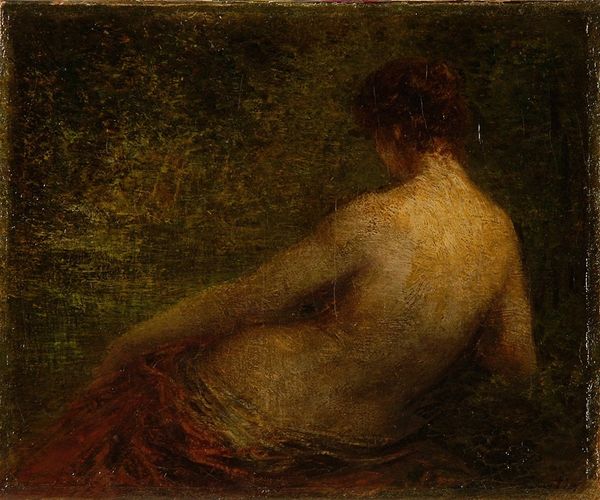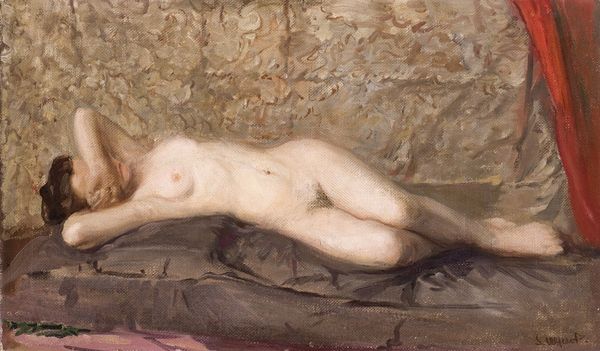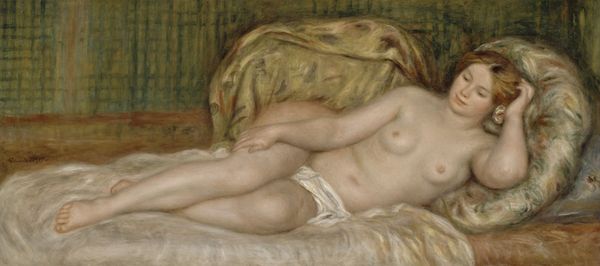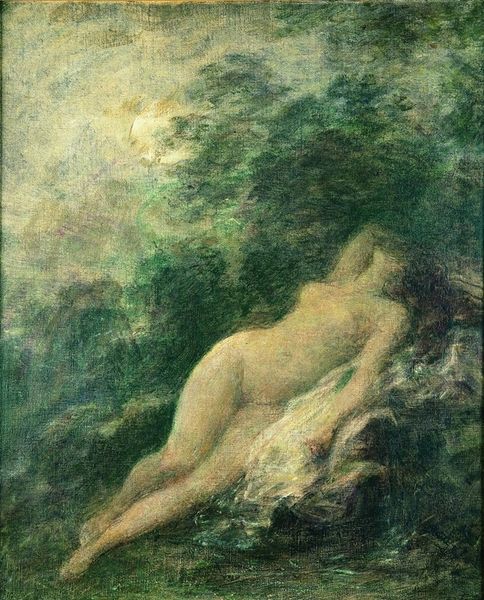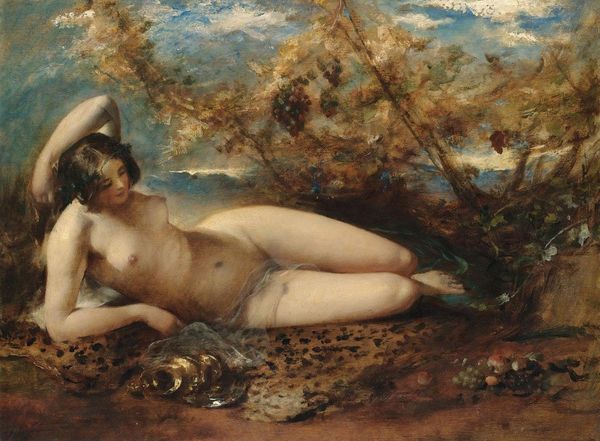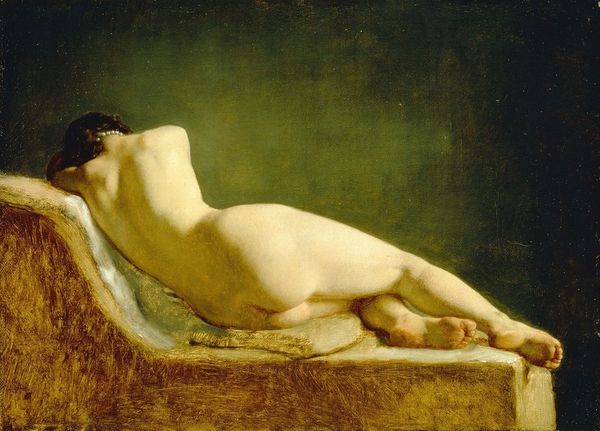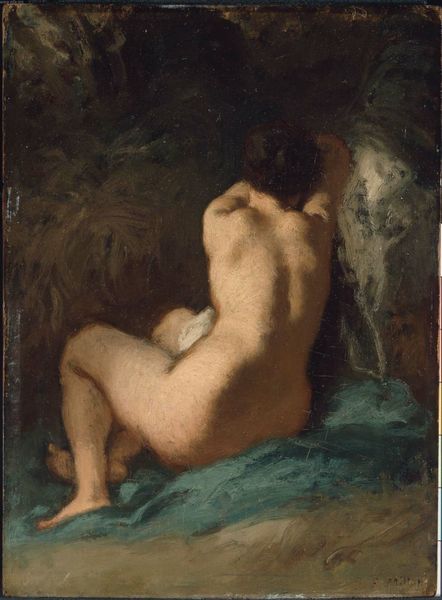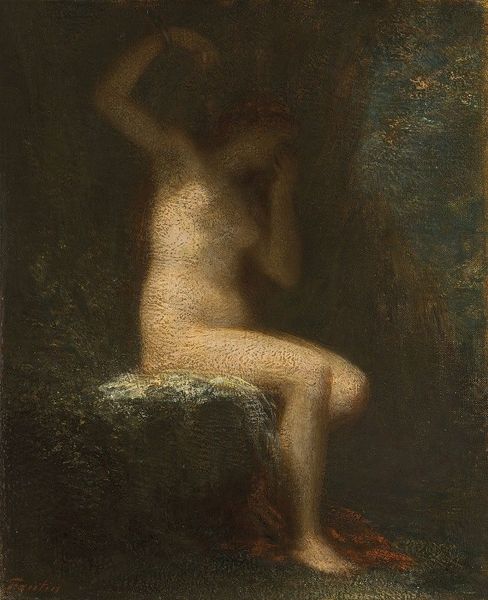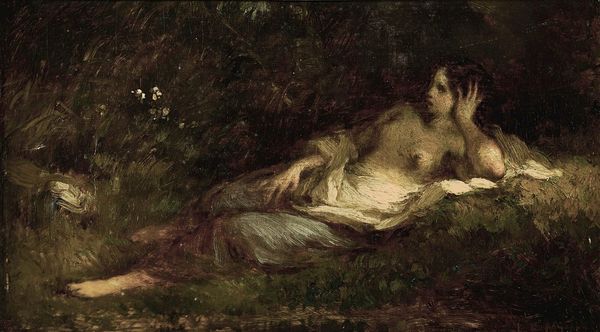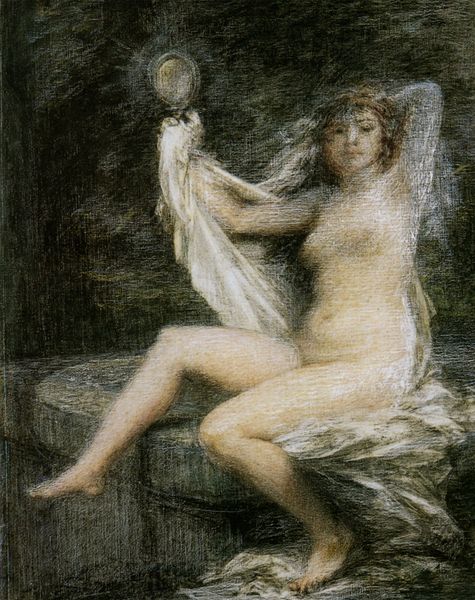
drawing, charcoal
#
drawing
#
figurative
#
impressionism
#
charcoal drawing
#
figuration
#
oil painting
#
charcoal
#
charcoal
#
nude
Copyright: Public Domain: Artvee
Editor: Here we have Henri Fantin-Latour's "Reclining Nude," created around 1874. It’s a charcoal drawing, and what immediately strikes me is how soft and almost dreamlike the figure appears. What do you see in this piece? Curator: Immediately, I see charcoal, not just as a medium, but as labor itself transformed into art. This wasn't simply a sketch, but an exploration of the body mediated by material production. Fantin-Latour used charcoal extensively. What relationship might the cheapness of the medium and proliferation of it among lower classes have on this work, versus oil? Editor: That’s interesting, I hadn’t considered that. So the choice of charcoal reflects more than just an aesthetic preference? It’s a commentary on the democratization of art materials, maybe? Curator: Precisely! Think of the Industrial Revolution happening then. Charcoal becomes readily available, cheaper to produce than paints which have a higher value, it levels the playing field, making art accessible to a broader demographic. Now, consider how the subject matter, the nude, historically associated with wealthy patronage, intersects with this readily accessible material. Does that tension interest you? Editor: It does. It feels almost subversive – taking a traditionally exclusive subject and rendering it with a tool that was becoming increasingly common. It sort of collapses that traditional hierarchy. Curator: Exactly. The very act of choosing charcoal, mass-produced, challenges established notions of art, moving away from simply depicting towards something born of the means of making itself. Editor: That gives me a new perspective on the artwork. I was focused on the image, not the material. Thank you for showing that Fantin-Latour isn't just about aesthetics; it’s a commentary on materials, process, and society itself. Curator: Absolutely, every art object exists inside material reality, no matter how dreamlike they appear. Examining their production deepens our appreciation.
Comments
No comments
Be the first to comment and join the conversation on the ultimate creative platform.
